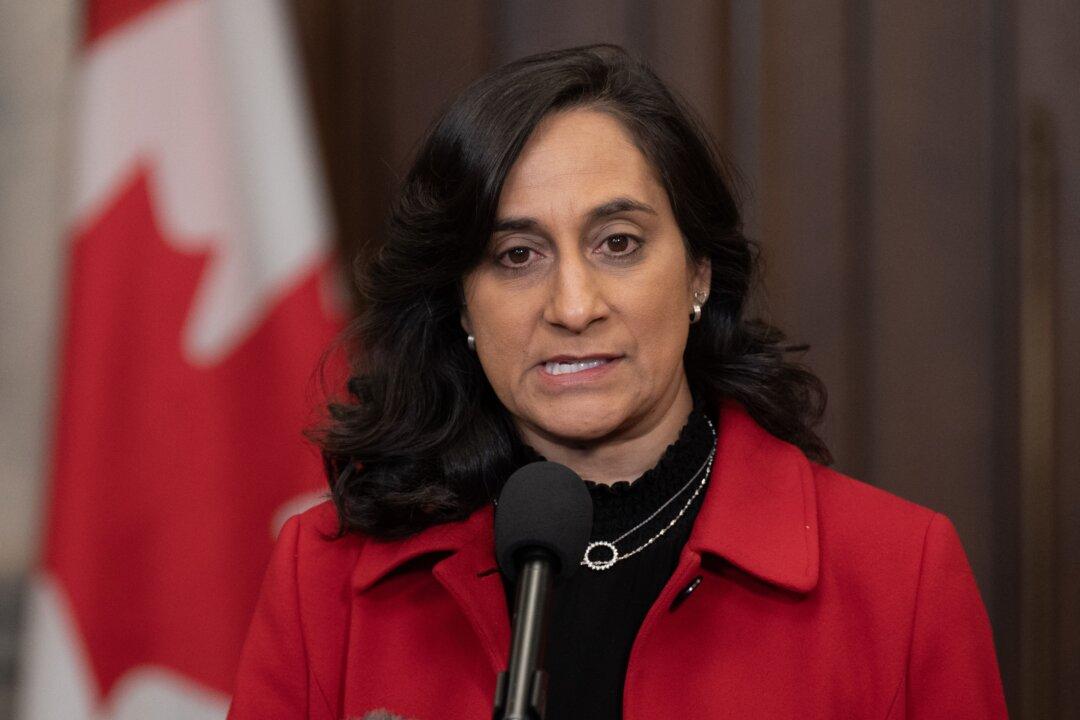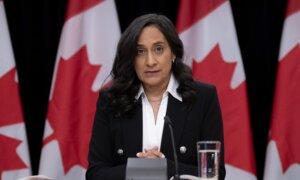The federal government will repurpose $10.5 billion over the next three years from the budgets of 69 departments, agencies and Crown corporations, Treasury Board President Anita Anand said on Feb. 29.
The top-line numbers laying out which departments found savings and how much they’re slashing are contained in the government’s main spending estimates, which were tabled in the House of Commons on Feb. 29 morning.
But there is nothing that shows exactly where those funds are being redirected. Ms. Anand only provided generalities when pushed to explain why the reports don’t show specifically where the funds are moving.
“So what we want to do is take the savings that we are seeing across ministries and put them towards the priorities that you are seeing in our main estimates,” she said.
“So that is affordable housing, that is health care, that is supports for seniors.”
Overall, the estimates show planned spending across government of $449 billion, compared with $432 billion in the main estimates one year ago.
The documents do not contain any new spending that may be unleashed in the next federal budget, which is expected sometime in the next six weeks.
Ms. Anand did reference new spending that was already announced, including the new dental care program that began rolling out last year and the new pharmacare program Health Minister Mark Holland announced on Feb. 29.
The last budget projected dental care would cost about $2 billion in 2024-25.
Mr. Holland said pharmacare, which will initially cover drugs for diabetes and birth control, will eventually cost $1.5 billion but the initial spend in 2024-25 will be much smaller because the program hasn’t been created yet.
The government has also been rolling out various initiatives to get more housing built, as housing prices and availability remain a critical issue for Canadians.
Nearly a year ago, the federal budget outlined a plan for the government to find more than $15 billion in savings over five years.
That included $7 billion from slashing budgets for all departments by three per cent, and another $7.1 billion from a 15 per cent cut in spending on outside consultants, professional services and travel.
Another $1.3 billion was to be saved through similar measures taken at Crown corporations.
In August, shortly after taking over as the Treasury Board president, Ms. Anand wrote to all other cabinet ministers asking them to provide a list of possible cuts.
The instructions included that the savings could not affect government services.
The Feb. 29 documents finalized those discussions.
Ms. Anand likened the process to what many Canadian families are doing in their own budgeting right now: looking for places to cut back without affecting their main activities.
“Let me be clear, this is not about doing more with less or arbitrary cost-cutting,” she said.
“This was a careful and systematic process to ensure that public funds are focused on key priorities.”
Almost one-quarter of the funds being repurposed are coming out of the Department of National Defence, with $2.5 billion in savings over the next three years.
That includes cutting travel by $58 million a year and professional services by $200 million a year.
Many departmental plans are extremely vague about where they’re finding the savings being attributed to them.
The Canada Revenue Agency intends to cut $65 million in 2024-25 and more than $323 million over three years.
But its detailed spending plan says only that those savings will come from “efficiency opportunities,” eliminating “duplication, lower-value-for-money activities, or a misalignment with government priorities.”
Similarly, the Canada Border Services Agency is slashing $66 million next year and nearly $270 million over three years, but exactly where seems to still be up for debate.
“To achieve these reductions, the CBSA is undertaking an agency-wide exercise to support the intent of the government spending initiative, with a focus on reducing contracting and travel, while avoiding impacts to service.”
Even as those departments are slashing spending in some areas, most are expecting a bigger budget overall.
For example, the Defence Department’s budget will rise more than $2.5 billion compared with what it was allocated last year.







